Mar 18, 2025, Day 30 of the 100-Day Dharma Talk, Introduction to Buddhism II
Hello everyone. Today is the 30th day of Venerable Pomnyun Sunim’s 100-Day Dharma Talk and the second lecture of the Introduction to Buddhism course. In Seoul, snow fell silently throughout the night, and even in the morning, large snowflakes continued to flutter down. As if winter was bidding its final farewell, the city was blanketed in white.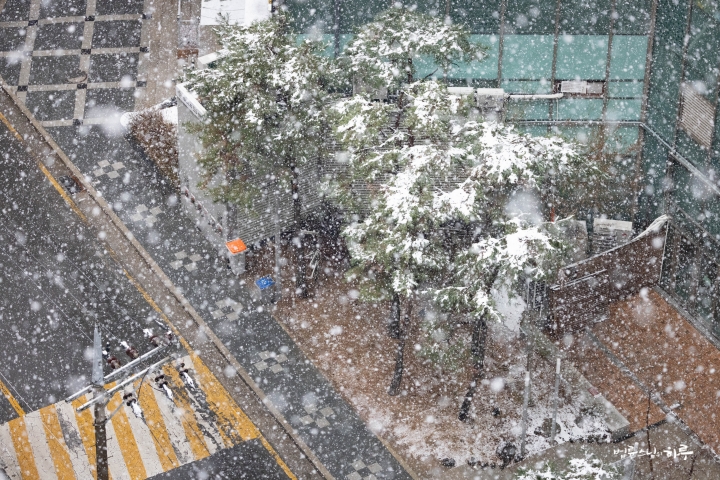
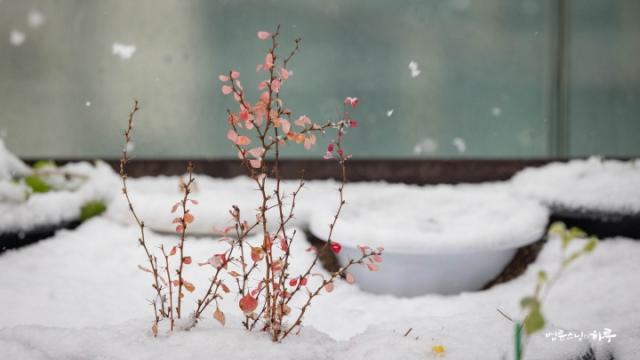
After completing his morning practice and meditation, Sunim headed to the Jungto Social and Cultural Center to deliver his lecture for the Introduction to Buddhism course. The course has been organized into two sessions, a morning class and an evening class. The morning session began at 10:15 AM.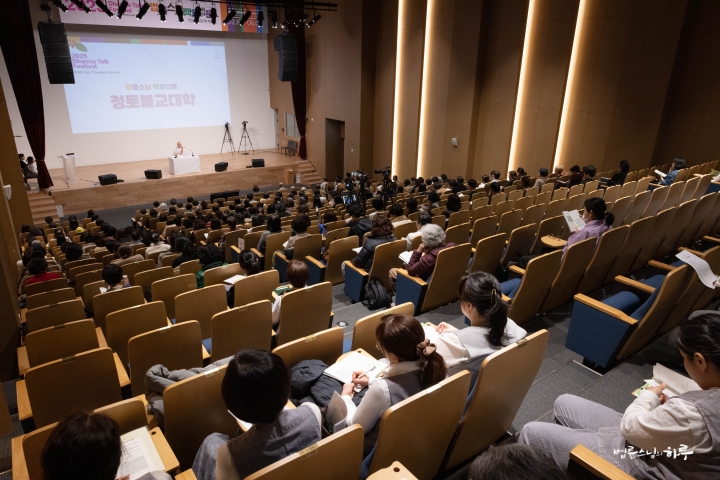
In the basement auditorium of the Jungto Social and Cultural Center, about 180 students were present in person, while approximately 170 people connected online for the live broadcast. Additionally, 25 people attended from the Haeundae Jungto Dharma Center, bringing the total attendance for the morning session to around 370 people. Everyone recited the Three Refuges and Words for Practice together, then performed three bows to request Sunim’s teaching.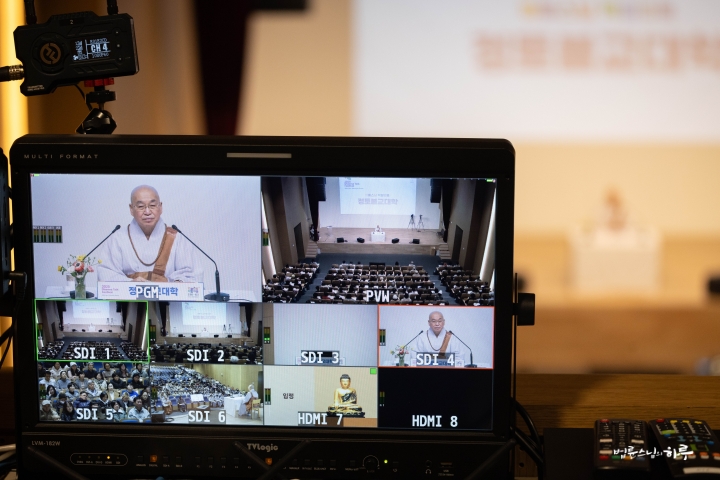
Sunim explained in detail the true nature of our world, elaborating on the law of dependent origination.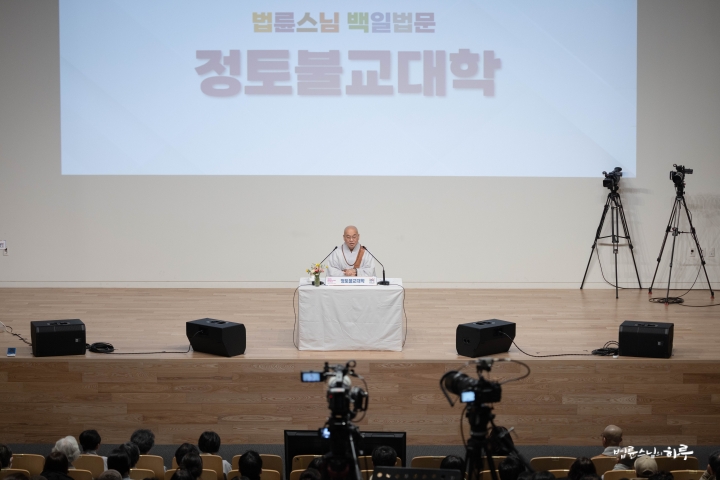
How Can We Live Without Suffering?
“Why does suffering arise? When we examine the cause of suffering, we find that it is ignorance. This means that if we overcome ignorance, suffering disappears. Then why do we live in suffering due to our ignorance? Surely no one wants to live in suffering. Today’s lecture topic is ‘What perspective should we adopt to live without suffering?’
How do we typically understand the world we live in? To put it simply, we perceive this world as a collection of independent entities. For example, if there are 200 people in this auditorium, we think of our society as a place where 200 people have gathered. We consider these 200 people as separate, independent individuals who can exist on their own. This is why philosopher Thomas Hobbes described society as ‘the war of all against all.’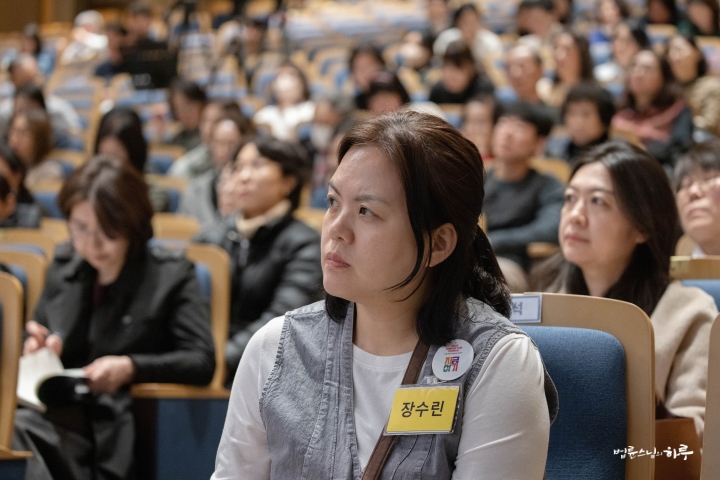
In the spiritual realm, people believed that each person has a substantial self, or Atman, so that while the physical body ages, becomes ill, and dies, the soul is eternal. In the material world, people thought there must be fundamental particles that constitute all things, which they named atoms. In the biological world, people believed that all living beings contain fundamental seeds of life. Traditionally, the world has been understood as a collection of independent entities, each with its own substance.
All Things in the Universe Are Interconnected
However, the Buddha broke through the barriers of conceptual thinking and saw the world as it truly is. Enlightenment means breaking through these conceptual barriers. When the veil was lifted from his eyes and he saw with the eyes of enlightenment, he realized that this world is not a collection of separate entities but is completely interconnected. Everything is connected both in space and time.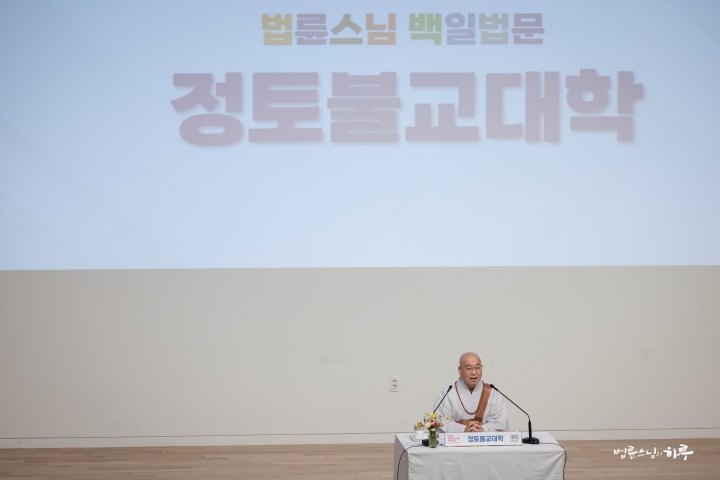
For example, when you place several beads in a basket, each bead appears to exist individually. This is because the string connecting the beads is not visible. However, if you pick up one bead and the rest come up with it, you realize that contrary to appearances, all the beads were connected. This is dependent origination.
Also, when you look closely at one bead, you can see all the other beads reflected in it. This shows how everything exists within one thing. To explain using a scientific analogy, it’s like saying the universe exists within a single atom, and those atoms collectively form the universe. This concept of dependent origination where the whole exists within each part is called ‘infinite mutual containment (重重無盡緣起)’. It means layers upon layers without end. This is how the actual world is interconnected.
When we view the world from the perspective of dependent origination, we see things differently than before. While a snake eating a frog might appear as survival of the fittest from a conventional viewpoint, from the perspective of dependent origination, it’s a harmonious process that maintains the phenomenon of life. If the eyes, hands, feet, and mouth of our body were all separate individual entities, there would be fierce competition among these organs. If there’s fruit on the table, who discovers it? The eyes. What goes to get there? The feet. The feet work hard to get there, but it’s the hands that grab the fruit. And who actually eats it? The mouth. Wouldn’t all these organs feel upset? Each organ works hard, but it’s the mouth that gets to enjoy the eating. (Laughter) 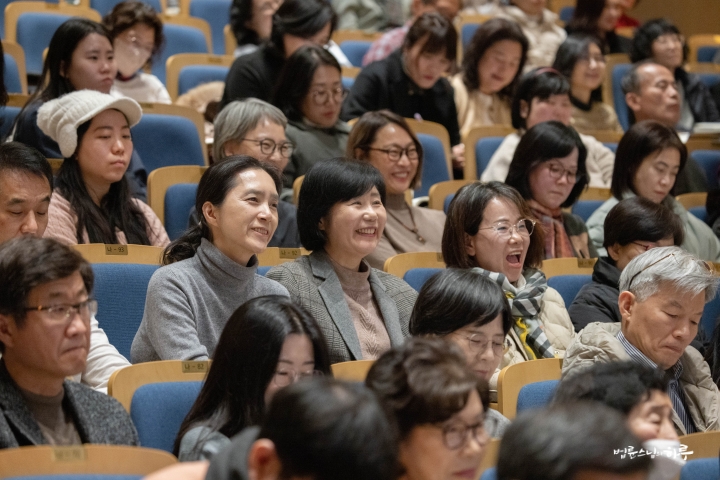
However, if we view these organs as interconnected parts of a single body, they are merely fulfilling different roles. The eyes discover, the legs walk, the hands pick, the mouth eats, the stomach and intestines digest, the liver stores, and the blood supplies. The question is whether we see these natural ecosystem phenomena as survival of the fittest or as interdependent life phenomena.
The fruit we eat becomes energy that is distributed to each organ. What happens if distribution to a certain organ is inadequate? The entire body dies. Similarly, our society needs fair distribution. Without fair distribution, it’s not role division but exploitation, which leads to the collapse of the entire society. That’s why we need to view the world from the perspective of interdependence. 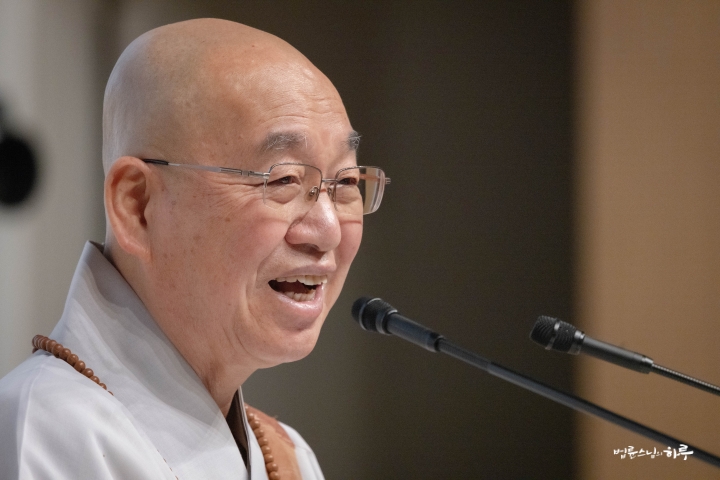
One Who Understands Dependent Origination Sees the Buddha
Buddhism’s worldview is based on dependent origination. However, in reality, most people view the world as a collection of individual entities. Only a minority see it through the lens of dependent origination. This is because experiencing dependent origination in daily life is extremely difficult. In our experience, it’s easier to perceive the world as a collection of individual entities. As a result, even Buddhism has reverted to the previous perspective as time passed throughout history.
The concept of reincarnation ultimately requires the existence of an individual self. Since having an individual self contradicts the Buddha’s teaching of non-self, concepts like Buddha-nature were created to substitute for the role of atman, essentially replacing it with different names. When people want to receive blessings, something in the original teachings needs to change. They create logic by altering things to make them sound plausible. Even the Buddha’s explicit teachings have been gradually modified, keeping only the framework while changing the content, which has led to today’s distorted form of Buddhism. 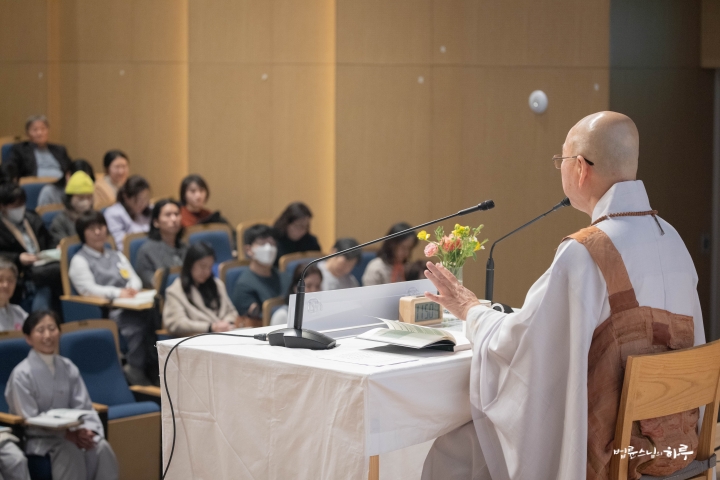
The Buddha taught that ‘human existence is not atman but a collection of the five aggregates (五蘊, pañca-skandha).’ Just as an atom is not a single entity but a combination of subatomic particles, human existence is a combination of these five aggregates. In other words, he taught the doctrine of non-self (無我設, anatta) rather than the doctrine of self (我設, atta). However, if we consider each of the five components of the aggregates as individual entities, we return to the doctrine of self. Some people explicitly accepted the doctrine of self, while others believed that each of the five aggregates was unchanging. But in the Heart Sutra, we find the phrase ‘all five aggregates are empty (五蘊皆空, pañca-skandhāḥ śūnyatā)’. If the five aggregates are empty, each component that constitutes them is also empty. This means that if you acknowledge the five aggregates as having inherent existence, it is not Buddhism. That’s why it continues with ‘form is emptiness, and emptiness is form.’ After the expression ‘Form is not different from emptiness, emptiness is not different from form. Form is emptiness, emptiness is form,’ it states that feeling, perception, mental formations, and consciousness are also the same, saying ‘So too are feeling, perception, mental formations, and consciousness.’ Initially, people followed the Buddha’s teachings exactly, but as time passed, the content became distorted and reverted to the doctrine of self. The Heart Sutra criticizes this and argues that we must return to the Buddha’s fundamental teachings. 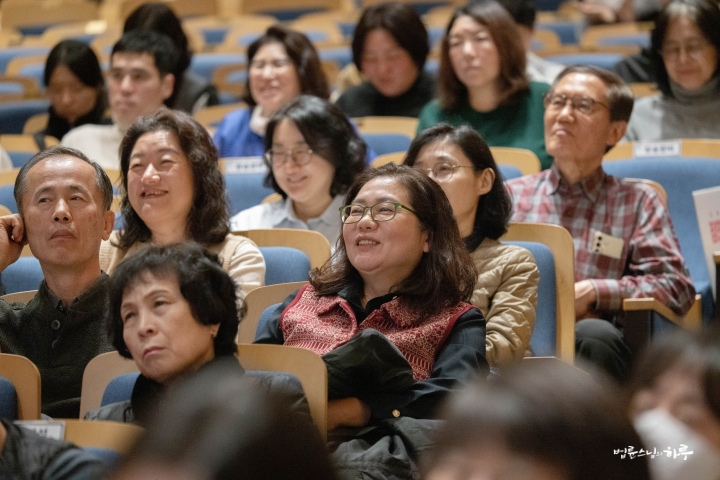
However, what the Buddha discovered was that the actual world exists through dependent origination. Since everything is dependently originated, nothing is permanent, and nothing exists independently. This is why we have impermanence and non-self. The saying ‘One who sees dependent origination sees the Tathagata’ means that when one realizes the law of dependent origination, suffering ceases. In other words, when one realizes impermanence and non-self, one reaches the peaceful state of nirvana where there is no suffering. This is the Three Dharma Seals (三法印, Trilakṣaṇa), which summarizes the core teachings of Buddhism.” 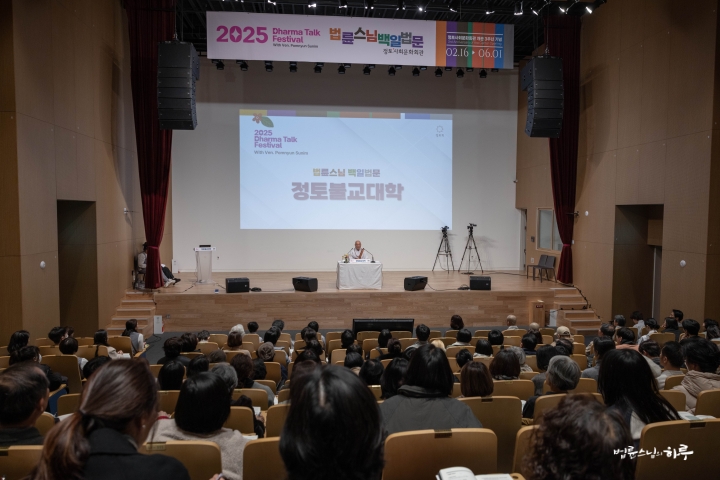
Continuing, Sunim explained how we perceive this world, discussing the twelve sense bases, eighteen elements, and five aggregates that Buddhism uses to explain mental processes, concluding the second lecture.
After the Dharma talk ended, the facilitator informed the students about their practice assignments. Since direct experience is important in the Jungto Buddhism Course, practice assignments are given after each class. The students agreed to diligently complete their practice assignments before meeting again next week, and then continued with small group sharing sessions.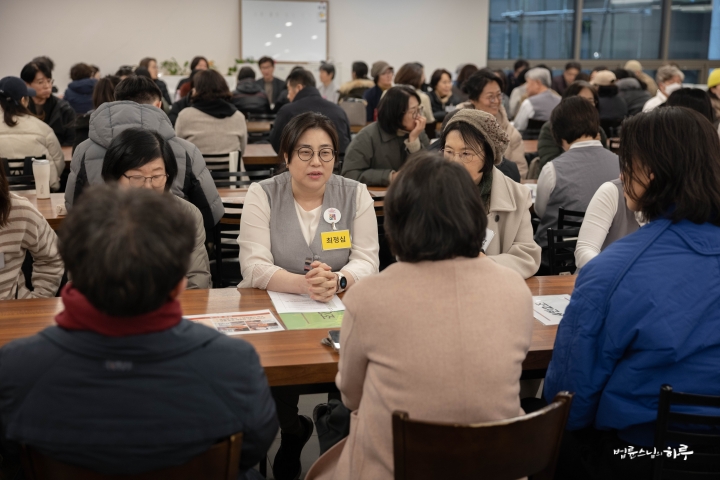
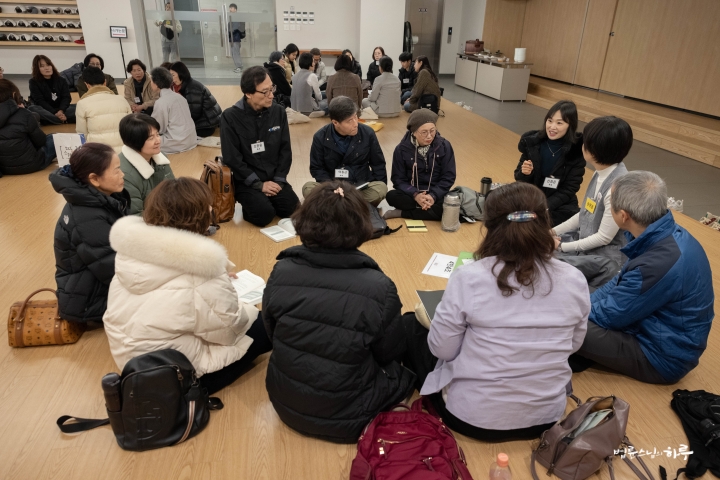
After having lunch with the Sangha in the basement dining hall, Sunim spent the afternoon working in his office.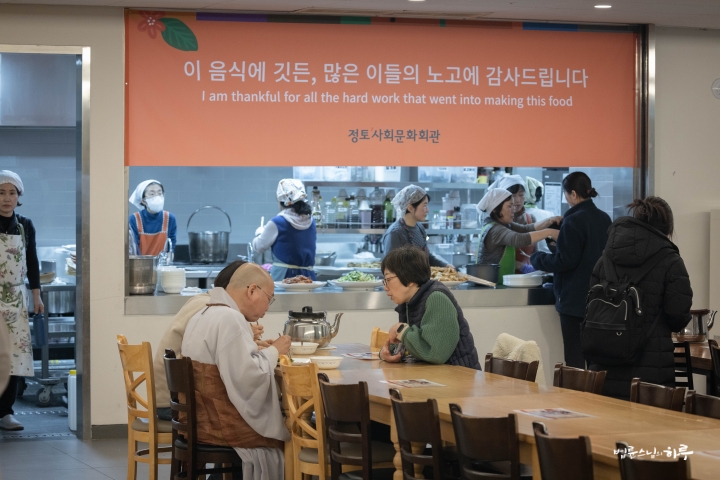
At 4:30 PM, the family of Rinchen Dawa, who has been accompanying Sunim as an interpreter during his visits to Bhutan, came to greet him.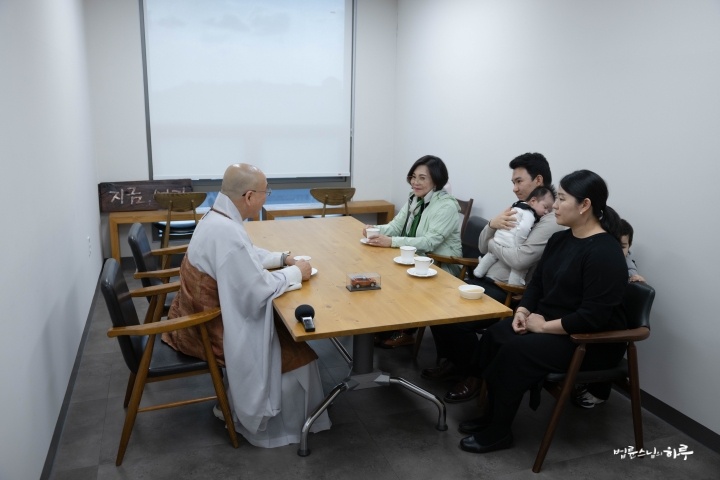
Sunim gave Rinchen Dawa’s son a toy car as a gift.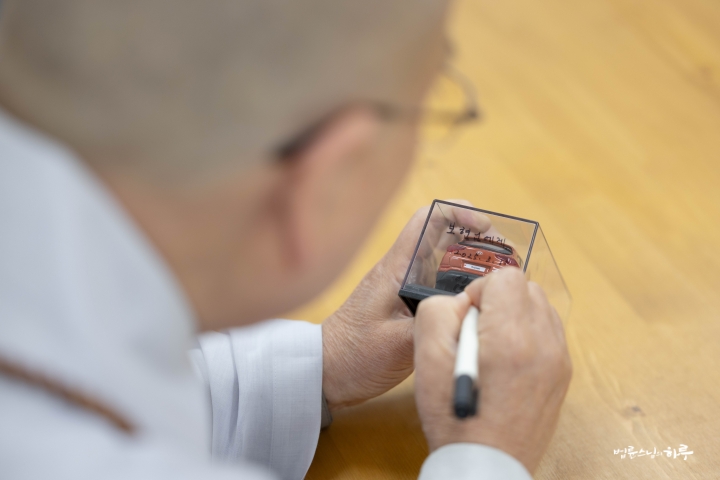
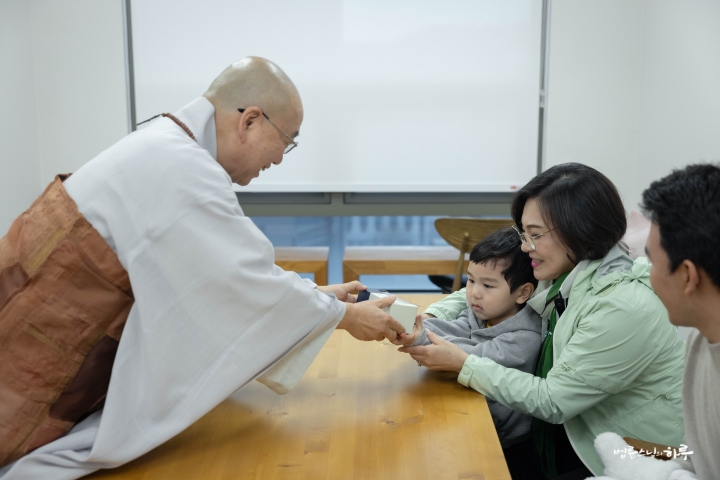
When Sunim visited Bhutan last January, Rinchen Dawa was unable to spend time with his family right after the birth of his second child because he was serving as an interpreter. Sunim expressed his apologies to the family.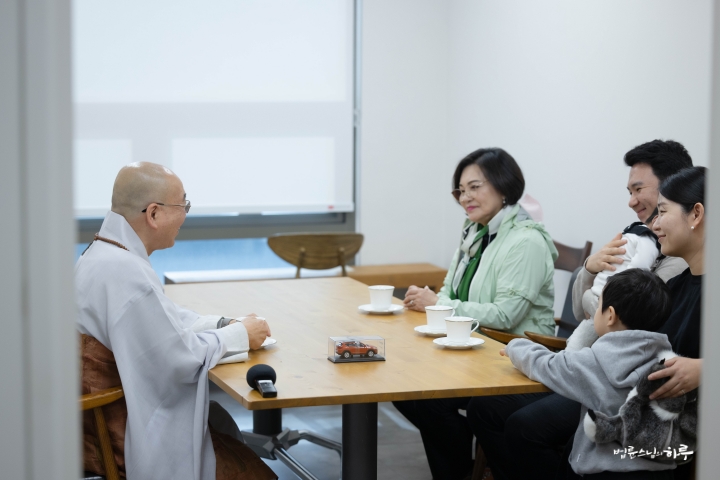
“I’m sorry that Rinchen Dawa couldn’t be with you right after the birth because he was helping with the Bhutan trip.” (laughs)
His wife smiled and replied.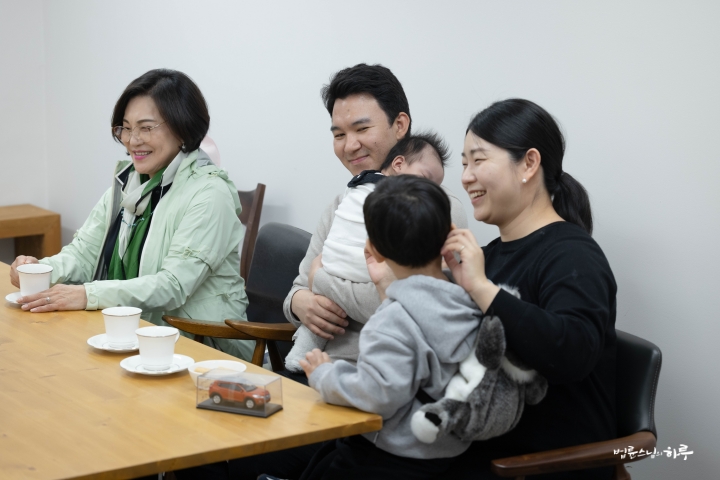
“Not at all. He was doing something meaningful. Thanks to you, I’m even more proud of my husband. We’re grateful that you gave us an opportunity to create good karma.”
“Thank you for thinking that way. Usually, when a husband volunteers, the wife objects. When a wife volunteers, the husband objects. And when children volunteer, the parents object. They question why someone would be so busy with volunteer work that don’t even earn money.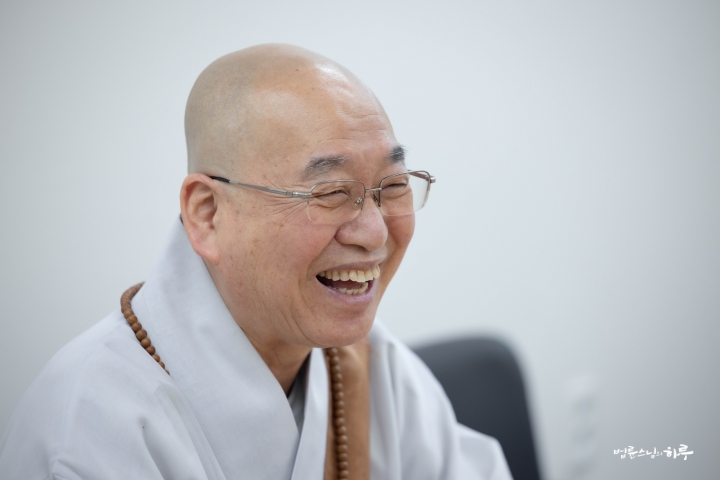
We need someone who can interpret directly from Korean to Dzongkha, but what makes Rinchen Dawa especially valuable is that he’s from Zhemgang. Rural people not only don’t speak English, but many don’t even know Dzongkha well. So we would need to interpret from Korean to English, then from English to Dzongkha, and then from Dzongkha to the Zhemgang dialect. But Rinchen Dawa can interpret directly from Korean to the Zhemgang dialect, which has been tremendously helpful.
Speaking in religious terms, it’s as if the Buddha prepared Rinchen Dawa specifically for me and then sent him to me. It’s as difficult for someone from Bhutan to come to Korea as it is for a camel to pass through the eye of a needle. It’s difficult to meet each other in Korea, difficult to meet me, and difficult to have family support rather than opposition. But when conditions align, connections like this are made possible.” (laughs) 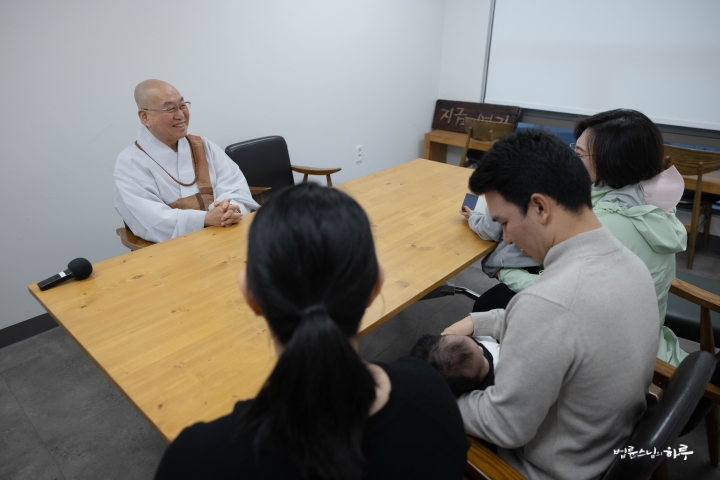
Her mother-in-law also answered with a smile.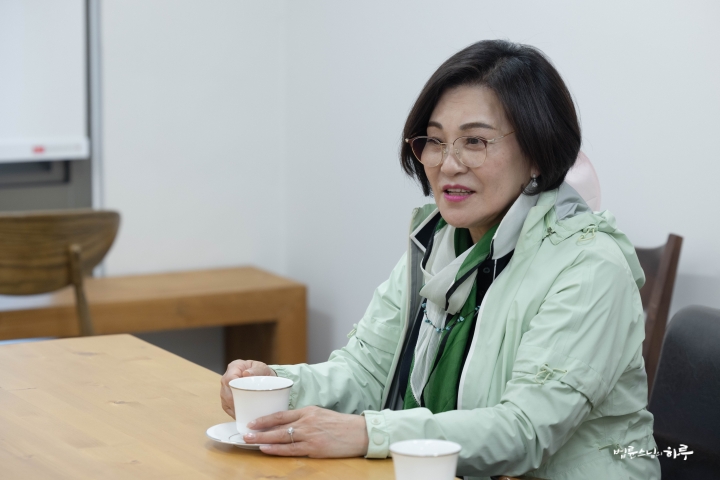
“We’re happy if my son-in-law can be of help to Sunim’s important work.”
Sunim explained in detail the background of starting the sustainable development project in Bhutan and its current progress before taking a commemorative photo together.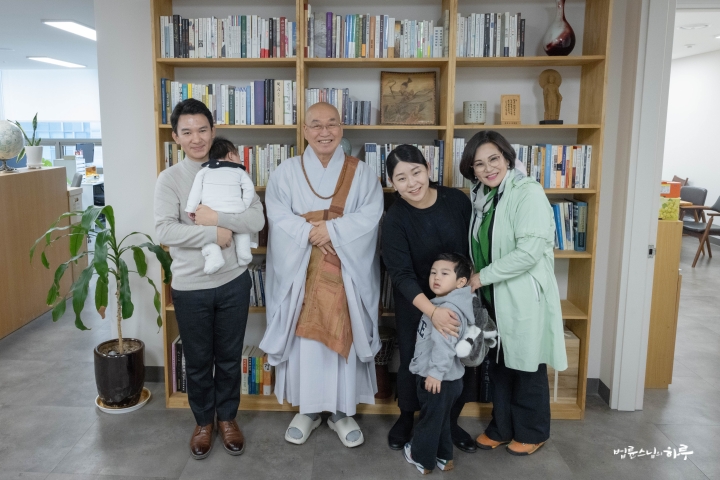
Following this, from 5 PM, with Rinchen Dawa’s interpretation, Sunim held an online meeting with Bhutanese government officials to discuss how to proceed with the main project for sustainable development. After introducing the participants and hearing greetings from Sunim and the Bhutanese cabinet minister, the discussion of agenda items began.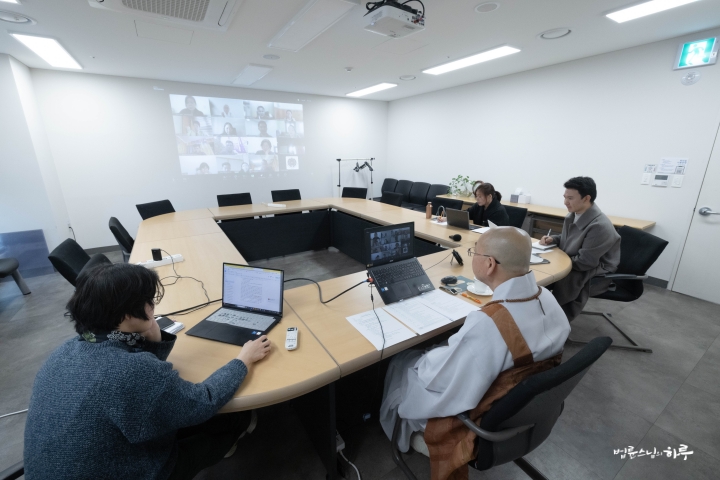
First, Nim Tshering, the Deputy Secretary of the Royal Office, expressed his gratitude to Sunim.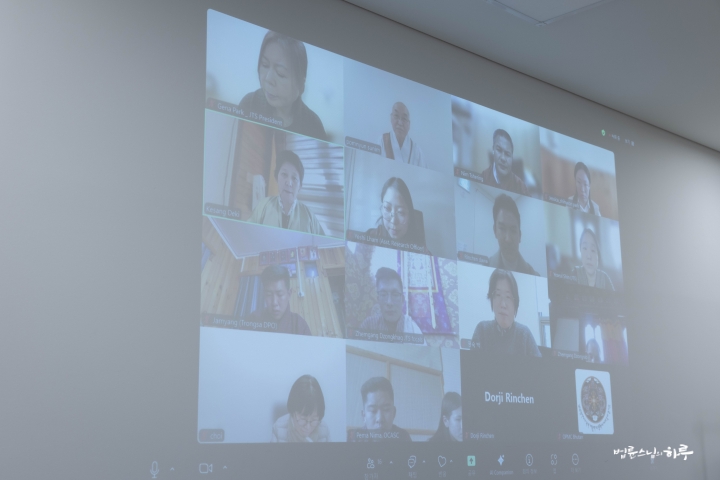
“The pilot project has been of great help to vulnerable people. Therefore, I am confident that the main project will be even more beneficial. Sunim personally surveyed all the remote villages and met with the villagers to listen to their stories. I want to emphasize that this is a very unique approach that no other organization has tried before. I would like to express my gratitude to Sunim and all the JTS staff. You have given hope to the poor people in rural areas.”
Over the past year, a pilot project was conducted, and it was decided to start the main project for sustainable development from July this year. After reporting on the progress of the pilot project, Sunim made proposals regarding the overall aspects of the main project, including the formation of a steering committee, role assignments, budget management, and project reporting. He then gathered opinions from Bhutanese government officials.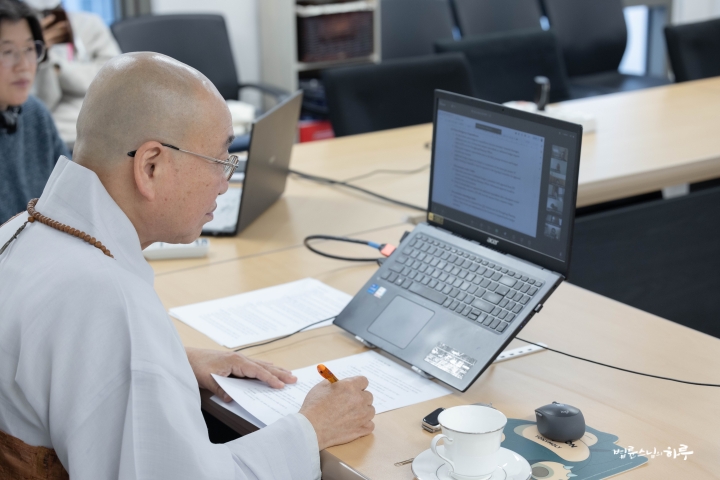

After an hour and a half of discussion and reaching an agreement on operational plans, Sunim finally spoke about the implementation plan for the main project.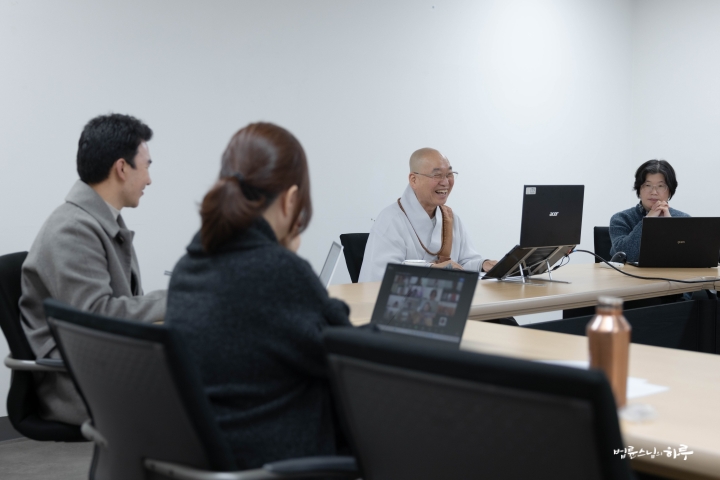
“The main project for sustainable development in Bhutan is planned for approximately three years as the first phase. The primary goal of the first phase is to improve the residents’ living conditions. First, housing improvement, which includes repairing the interior of houses and building new homes for those without shelter. Second, improving irrigation systems. Third, improving drinking water. Fourth, road repairs. Fifth, installing fences around fields to protect crops. Sixth, improving educational facilities. Seventh, healthcare support. Eighth, environmental protection. Ninth, preservation of traditional culture. Through these initiatives, we aim to improve the residents’ living conditions over the next three years.
After completing and evaluating the first phase, we plan to develop a strategy for the second phase. The main objective of the second phase is to increase residents’ income. Since we need to conduct pilot projects for the second phase while implementing the first phase, we have allocated additional budget for that purpose.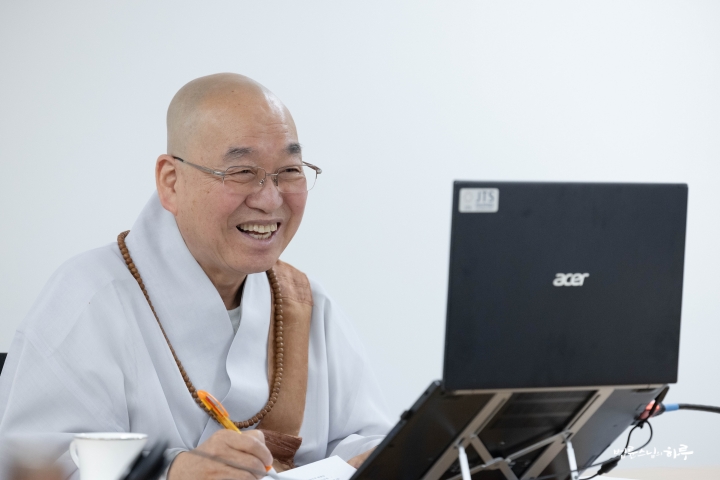
Now that the framework is established, my part is mostly complete. From here on, it’s up to all of you to carry this forward. Please approach this work as if it were your own.”
Finally, as the meeting concluded, a cabinet minister from the Bhutanese government offered closing remarks.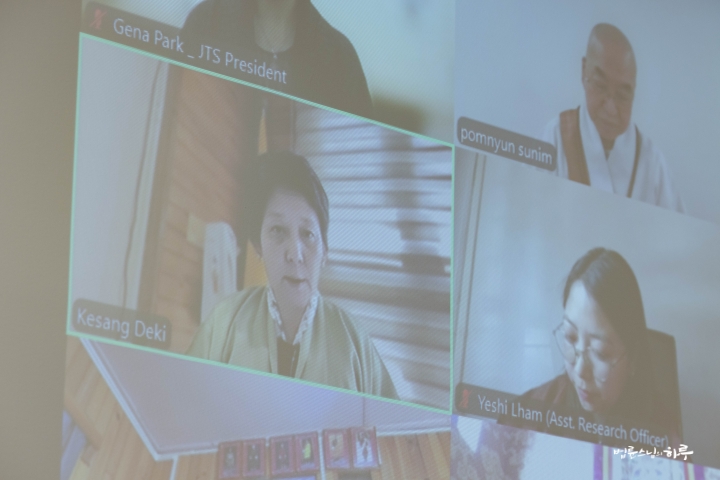
“I ask all planning officers, administrators, and other officials to support JTS activities so that village residents can actively participate. Especially for officials in Trongsa and Zhemgang, please consider our meeting with Venerable Pomnyun Sunim as a blessing and work diligently. Thank you.”
The discussions concluded with an agreement to sign an MOU for the main project when Sunim visits Bhutan in June.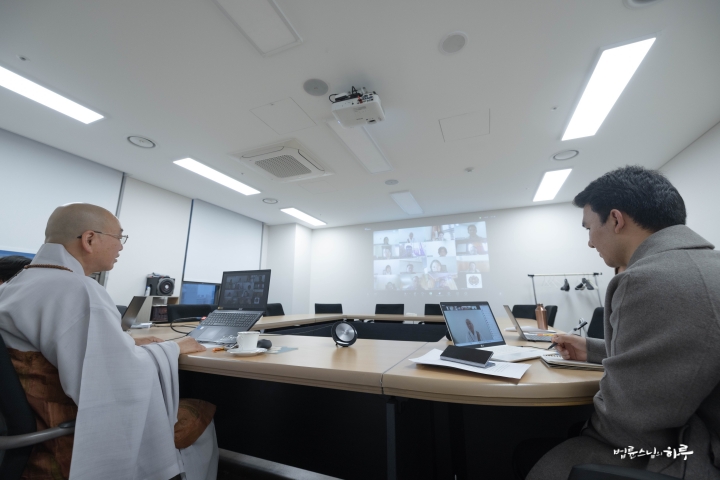
As the day came to an end, the evening session of the Jungto Buddhism Course Lecture 2 began at 7:30 PM.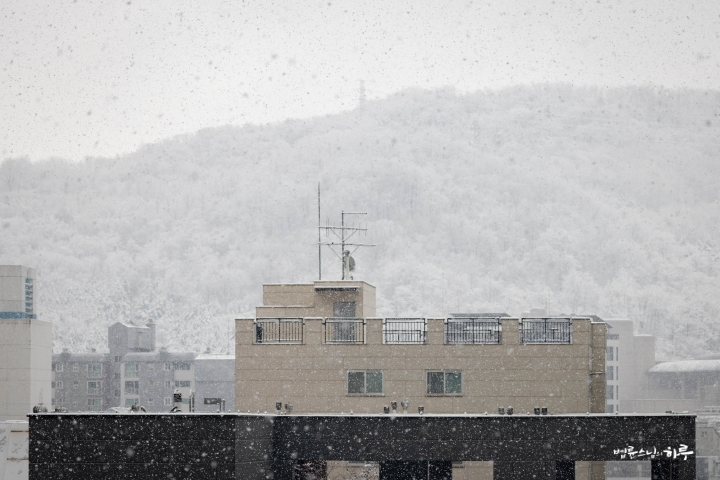
About 190 students who had rushed over after work gathered in the basement auditorium, while approximately 340 people connected to the online live broadcast, and around 10 people attended at the Haeundae Jungto Dharma Center. In total, about 540 students enrolled in the evening session of the Jungto Buddhism Course. They recited the Three Refuges and Words for Practice together, then performed three bows to request Sunim’s Dharma talk.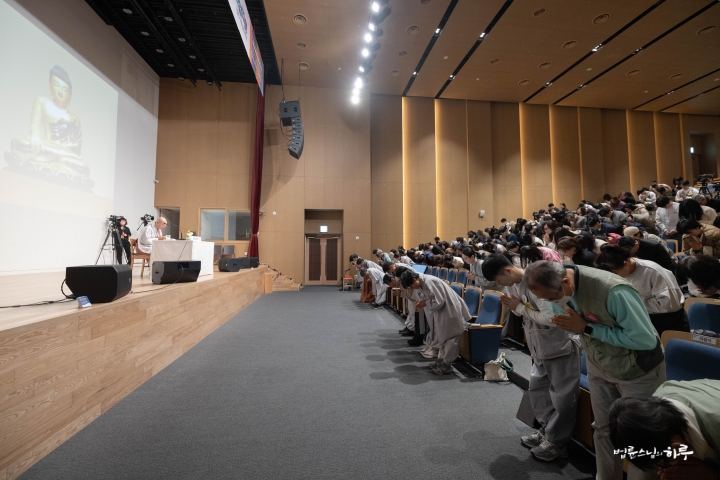
As in the morning lecture, Sunim explained the Buddhist worldview of dependent origination and continued to elaborate on how Buddhism explains human cognitive processes.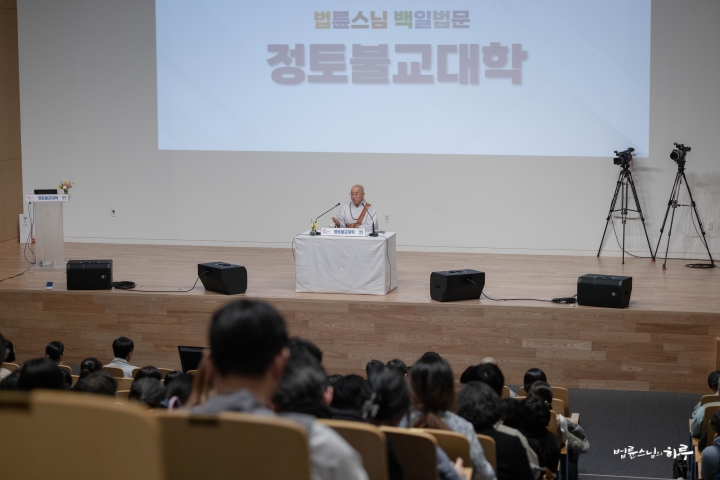
“In reality, everything in the world exists through dependent origination, yet we perceive it as a collection of individual entities. Why are we unable to perceive existence as interdependent?
What I Know Is Not the Truth
First, we develop misconceptions due to the limitations of our experience of time and space. Perceiving the sun as revolving around the Earth is an illusion arising from these limitations. If we could leave Earth, we would clearly see this isn’t true. However, as long as we remain on Earth, no matter how much explanation we receive, the sun appears to rise in the east and set in the west. Despite our education, in our perceptual world, the sun rises and sets. While the Earth rotates on its axis, being attached to its surface creates this optical illusion. When such misconceptions become widespread, they are accepted as truth. When those who hold misconceptions become the majority, those who speak the truth are paradoxically labeled as deceivers. 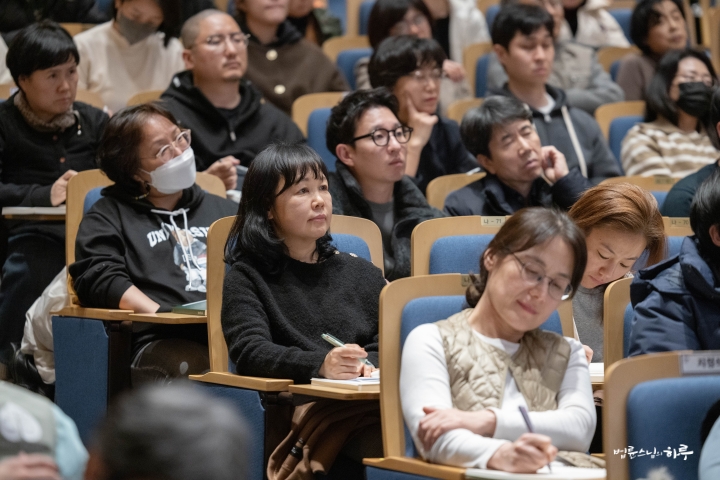
When we claim to know something, we come to know it through our senses. Seeing with our eyes, hearing with our ears, smelling with our nose, tasting with our tongue, and feeling with our body—these are what we call the ‘five senses.’ When the information gathered through these senses is connected through neural pathways in the brain, we come to understand certain principles. This is a different function from what we see or hear directly. It’s knowing through thinking. When we add thinking to seeing, hearing, smelling, tasting, and touching, we have six sensory organs in our body. In Chinese characters, these are called ‘眼耳鼻舌身意 (eyes, ears, nose, tongue, body, mind)’.
All Existence Is the Twelve Sense Fields
Even with eyes, we cannot see without light. We need shapes and colors to see and know. Similarly, each sensory organ requires its corresponding object. We know by seeing shapes and colors, by hearing sounds, by smelling odors, by tasting flavors, by touching objects, and by thinking in head. These objects of perception are called ‘色聲香味觸法 (sight, hearing, smell, taste, touch and mind)’. It is the meeting of these two sets—the six sense organs and the six objects—that creates what we call ‘knowing.’
The world we speak of is the world we know. What we know exists, and what we don’t know might as well not exist. This world that we claim to know is a combination of the six sense organs and the six objects—twelve elements in total. That’s why in Buddhism, all existence is referred to as the ‘twelve sense fields.’
Second, differences arise from our karmic consciousness. There are things that cannot be explained by the twelve sense fields alone. Sometimes people perceive the same thing differently. For instance, if I ask about this cup, ‘Is it large or small?’ some will say it’s large while others will say it’s small. 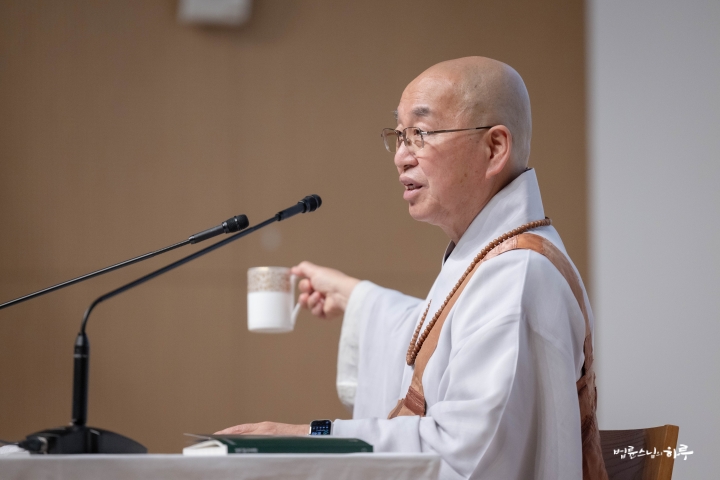
How do we know if a cup is big or small? Compared to the cup lid, the cup is big. Compared to the microphone, the cup is small. So, is this cup big or small? Here we can see that the concepts of ‘big’ and ‘small’ don’t come from the object itself but from our perception. The perception of ‘big’ or ‘small’ arises from comparison with other objects, not from the existence itself. If ‘big’ or ‘small’ were inherent qualities of the object itself, then this cup would either be consistently big or consistently small. It couldn’t be both depending on the situation. Today, all the expressions we use, such as big, small, new, old, expensive, cheap, clean, dirty, long, short, wide, and narrow, none of these are inherent to the objects themselves. They all come from our perception. 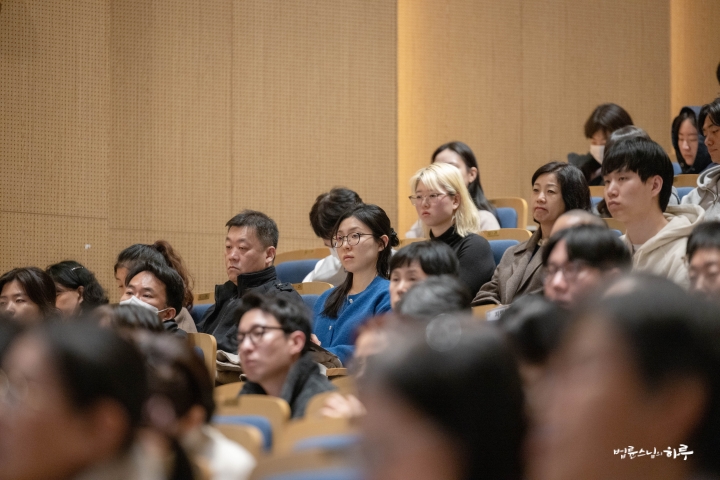
Yet we fail to recognize that this is a matter of perception. We say, ‘How can you say this cup is small? Can’t you see with your own eyes?’ and insist that what we see is correct. This is like looking at a wall while wearing colored glasses. Depending on whether you’re wearing red glasses or blue glasses, the wall appears to be a different color. But the person wearing the glasses believes that only the color they see is real. They say, ‘I call it red because it is red, and I call it blue because it is blue. What’s the problem?’ But how should we express this accurately? Instead of saying ‘The wall is red’ or ‘he wall is blue’. we should say ‘To my eyes, it appears red’ or ‘To my eyes, it appears blue.’ That’s why Ananda, the disciple, never said ‘The Buddha said this’, but rather ‘This is how I heard it’. When you go home today, you shouldn’t say ‘Sunim said this,’ but rather ‘This is how I heard Sunim’s words’. This would be the accurate expression. This is because even in the same time and space, each person’s perception differs. People see the same situation differently. It’s the same reason why some people support the presidential impeachment trial while others oppose it. Everyone has different thoughts.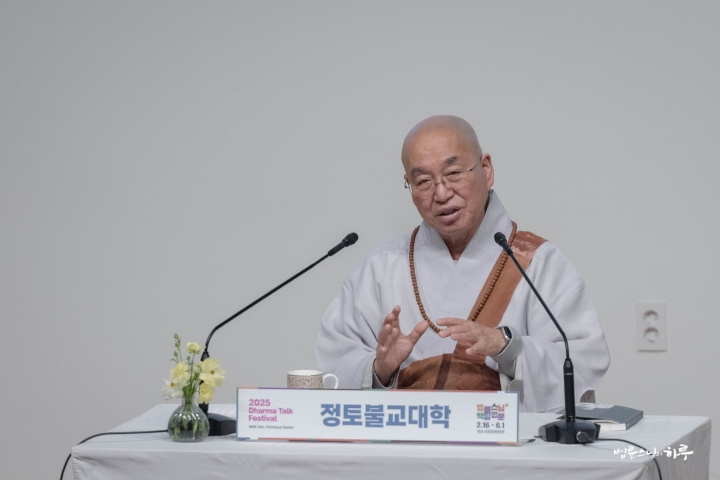
Differences in perception stem from differences in karma (業識). Karma refers to all the experiences and knowledge accumulated in our minds throughout our lives. This karma influences our new perceptions. It’s like wearing colored glasses. If I’m wearing yellow-tinted glasses, they affect how I see things, causing me to unconsciously perceive the world with a yellow hue.
Everyone present here has different karma. Each person is wearing glasses of a different color. Someone who has taken off their glasses once might say, ‘In my eyes, it appears yellow.’ But what about someone who has never removed their glasses since birth? They simply insist, ‘That wall is yellow.’ Most people have never removed the glasses of their karma. That’s why they insist they are right, even when others see things differently.
One person claims God exists, while another says God doesn’t. They could debate all night about whether God exists or not, and never reach a conclusion. But the answer to this problem is simple. We can simply observe, ‘This person believes God exists’ and ‘That person believes God doesn’t exist.’ Similarly, we should say, ‘In this person’s eyes, the wall appears yellow’ and ‘In that person’s eyes, the wall appears red’ rather than declaring, ‘That wall is yellow’ or ‘That wall is red.’ The wall is just a wall, but some people see it as yellow, others as red. It’s like this cup. It’s just a cup, but some people say it’s large, while others say it’s small.
All Things Are the Eighteen Elements
Our karma underlies everything we see, hear, smell, taste, touch, and think. Even more than our perception of size, big and small, our karma is most evident in how we experience pleasant or unpleasant feelings. When Koreans smell doenjang jjigae (soybean paste stew) cooking, they say it’s ‘savory’ and ‘mouth-watering,’ while foreigners might say it’s ‘disgusting’ or ‘nauseating.’ This is all because each person’s karma works differently. That’s why we need to add consciousness (識) to the twelve sense fields. When we see something, it’s not just the eye and the form/color that are involved, but also the filter of consciousness. Eye (眼), form (色), and eye-consciousness (眼識) – these three elements work together when we see something. The six sense organs (六根), the six sense objects (六境), and the six types of consciousness (六識) formed from accumulated past experiences. These eighteen elements combine to create our perception. This is what we call the eighteen elements (十八界). 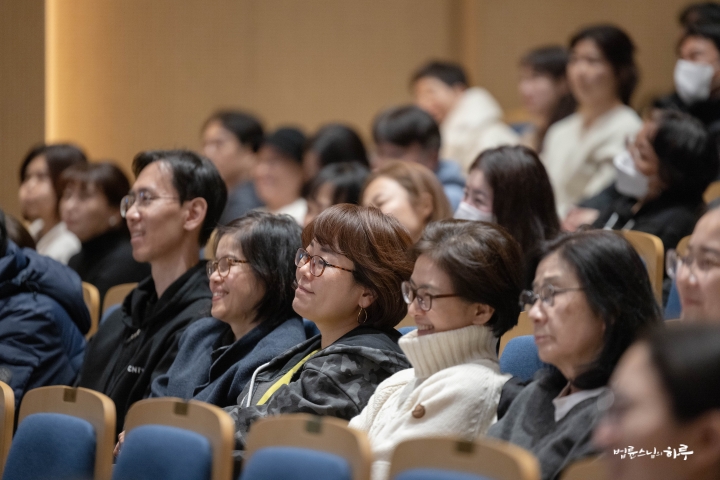
Since all things are composed of the eighteen elements, the world each of us perceives differs slightly. This doesn’t mean they’re 100% different. There are similarities and differences. We can say they’re not exactly the same. With the same food, one person might say it’s too salty, while another finds it bland. Someone might paint their walls red and think it looks good, while another person finds it tacky. People interpret the same phenomenon differently. All the discriminations in this world arise from this.”
It’s Not About Right or Wrong, Just Different Perspectives
Therefore, we should simply accept different viewpoints and beliefs. Yet we often refuse to do so. We think our perspective is right and others’ are wrong. But they’re just different. If we can go a step further, we might understand that ‘from that person’s perspective, they could think that way.’ Accepting others as they are, with their differences, is respect. Respecting someone means accepting them whether they see things as small or large, red or otherwise. The Buddha said, ‘Respect others’ intentions.’ Respect isn’t about elevating others. It’s about acknowledging our differences. Beyond acknowledgment lies understanding. Understanding doesn’t mean agreeing that the other person is right. It means seeing that from their perspective, they could think that way. When we acknowledge and understand, anger doesn’t arise in our hearts. But acknowledgment itself is difficult. Even if we acknowledge our differences, understanding can be even more challenging. 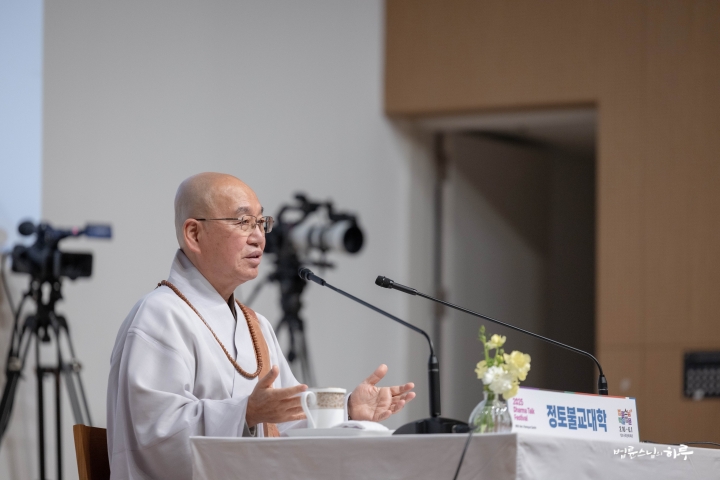
Recognition and understanding are objective facts. Whether God exists or not is not an objective fact. That is a belief. The only fact is that our beliefs differ. With this perspective, many of our questions can be resolved. When you look at others, whether your husband, wife, or boss, if you can view them thinking, ‘From their perspective, this makes sense,’ you will be able to understand them.
Each person has different interests, beliefs, thoughts, values, and systems of perception. Everyone thinks, speaks, and acts based on their own foundation. We cannot say who is right or wrong about this. We constantly judge our differences in terms of right and wrong, which gives rise to all kinds of disputes. This becomes the root of numerous errors and ignorance. Errors occur in each person’s perception, and that’s where our suffering begins. Therefore, if we understand where these errors originate, we can eliminate suffering.” 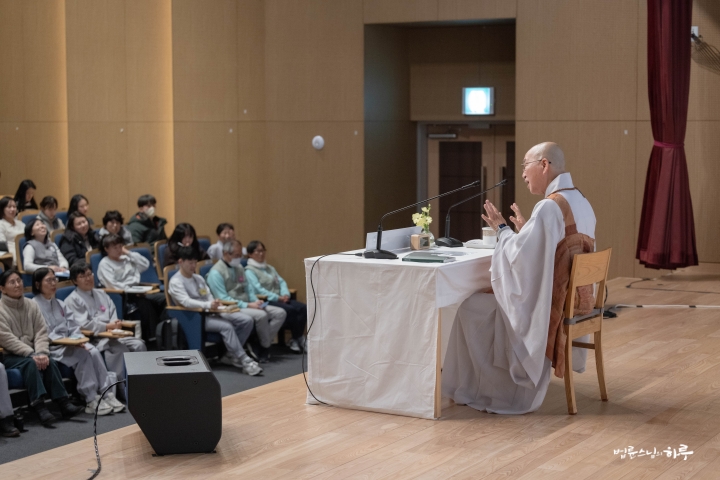
After the facilitator explained the practice assignments to the students, the second session concluded with the Four Great Vows.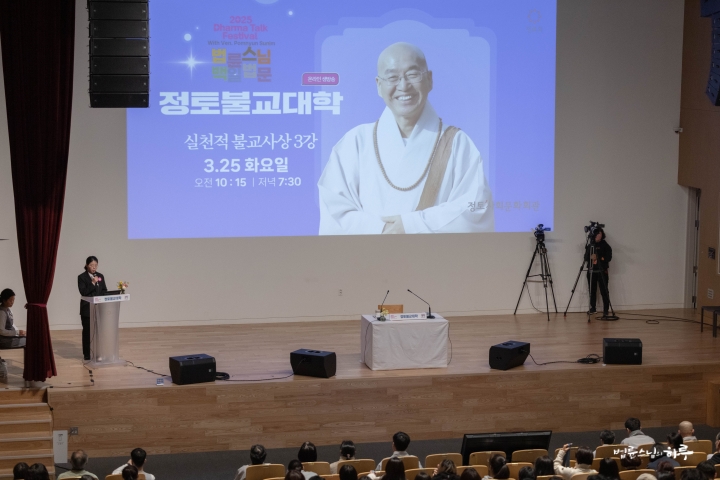
The students gathered in groups to introduce themselves and share their thoughts. Sunim returned to the Seoul Jungto Center to wrap up his day.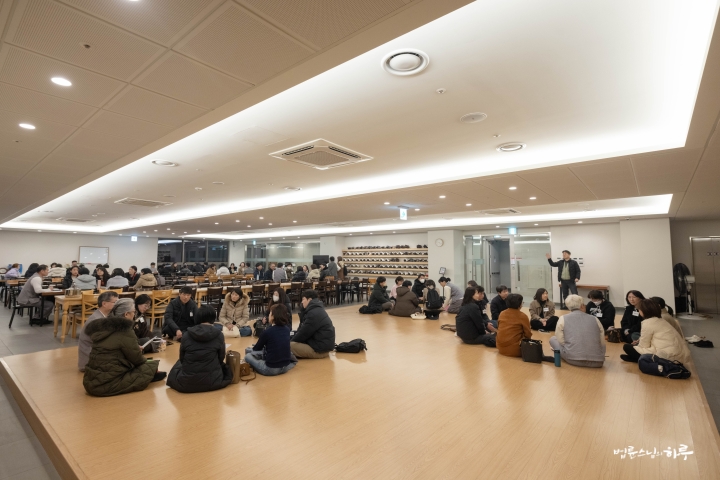
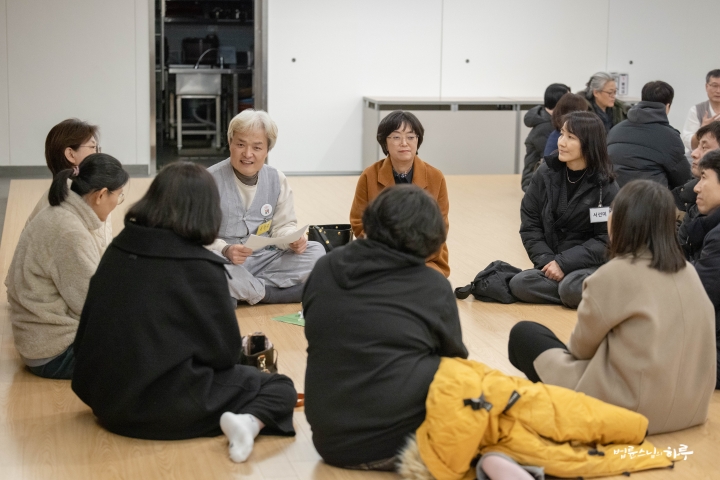
Tomorrow will be the 31st day of the 100-Day Dharma Talk. In the morning, Sunim will attend a meeting of religious leaders for national reconciliation and peace, followed by the daytime Weekly Dharma Assembly at the Dharma Hall on the third floor of the Jungto Social and Cultural Center. In the afternoon, he will participate in a research seminar at The Peace Foundation and meet with planning committee members. In the evening, he will lead the evening Weekly Dharma Assembly.




